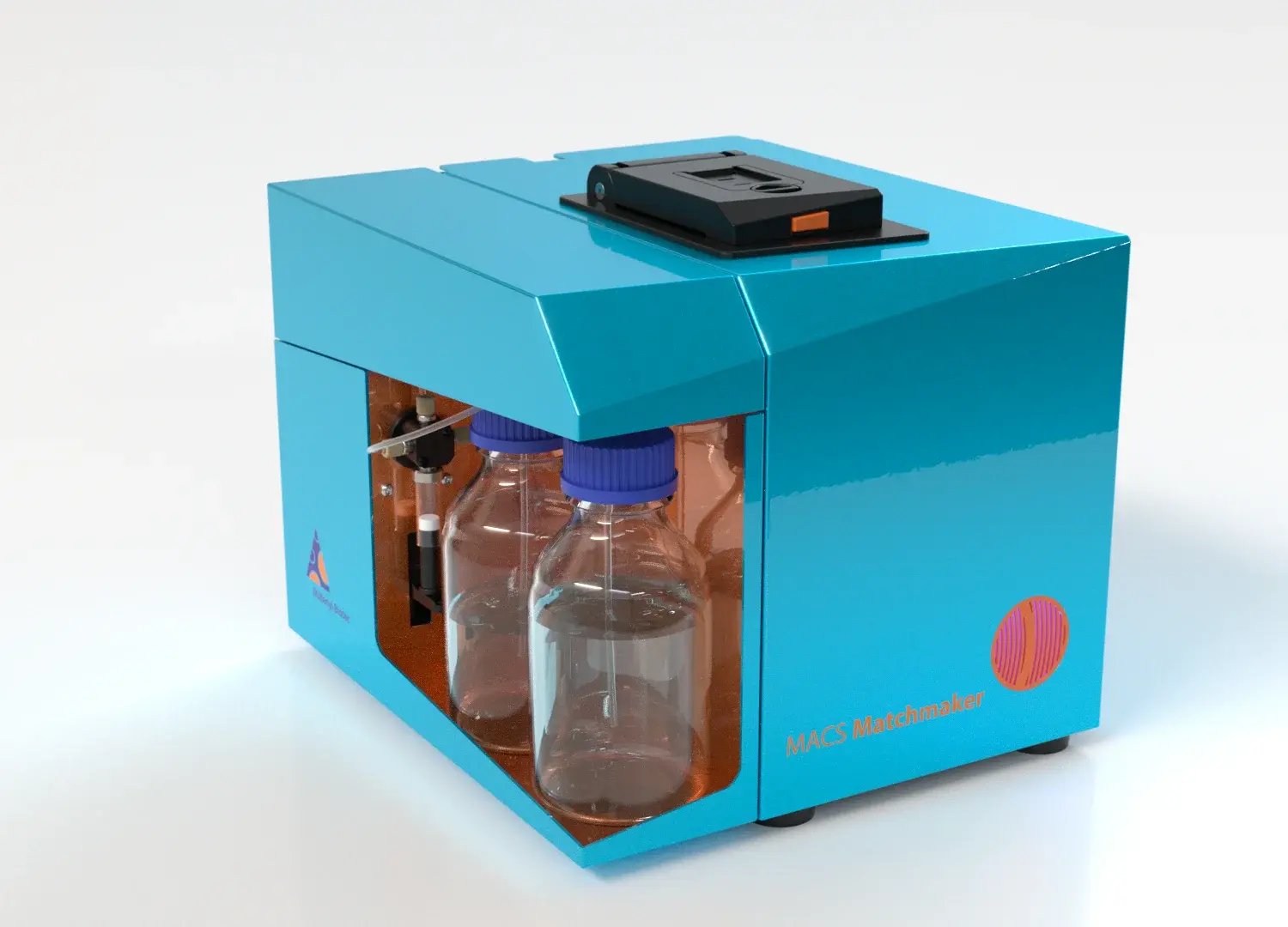Still measuring in buffer systems?
Get ready for biophysics in biological environments
Measure in biologically relevant systems and get the scientific picture correct from the beginning.
Real biological insights for reliable clinical success
Introducing the MACS® Matchmaker
Experience a robust platform that delivers quantitative data on binder affinity, kinetics, and specificity in real biological systems. Unlock new possibilities in your research today – because every target deserves its perfect match!
Our first commercial instrument using focal Molography, revolutionizes biological interaction measurement. This innovative approach provides a direct, undisturbed view of molecular dynamics in their natural state, without the need for labels, overcoming traditional research limitations like signal disturbance and non-specific binding. It's not just an instrument; it's a gateway to a new era of life sciences research, enabling real-time observation and quantification of biological processes. It is transforming biological research, paving the way for more accurate, efficient, and straightforward studies, heralding a groundbreaking future in molecular interaction research.

Crude Media
in vivo-like environment and eliminate the hassle of pre-purification saving time.
Simple Assay
Leverage our easy-to-use sensor functionalization protocol to set up your experiments faster than ever.
Automatization
Use the MACS® sampler for fully unattended runs in combination with up to 2 x 384 well plates.
Complex Samples
in vivo like measurement and saving time by eliminate the hassle of sample pre-purification
Automation
Use the MACS® Sampler for fully unattended runs in combination with up to 2 x 384 well plates
What our customers say
What can it be used for
on-DNA Hit Validation in High Throughput
-
DNA encoded library (DEL) screenings
- Validation of hits from SELEX screens
-
Peptides
-
DNA/RNA
-
Small fragments
- Cross-reactivity studies
Binder Development in biologically relevant samples
Identifying promising binder is essential in any antibody development pipeline to quickly narrow down the number of promising candidates. Even more important is to characterized promising candidates in the biological environment of action (plasma, interstitual fluid, cytoplasm etc.)
We have a special focus on:
- Antibodies and derivatives
- Antibody drug conjugates
- DNA based binder (Aptamers)
Target identification in living cells
Protein protein interactions (PPIs) are crucial in understanding cellular mechanisms, as many diseases result from abnormal protein interactions. Identifying these interactions helps researchers pinpoint potential drug targets.
-
Membrane Receptors (GPCRs - G-Protein coupled receptors)
-
Immune receptors for CGT (cell and gene therapy)

